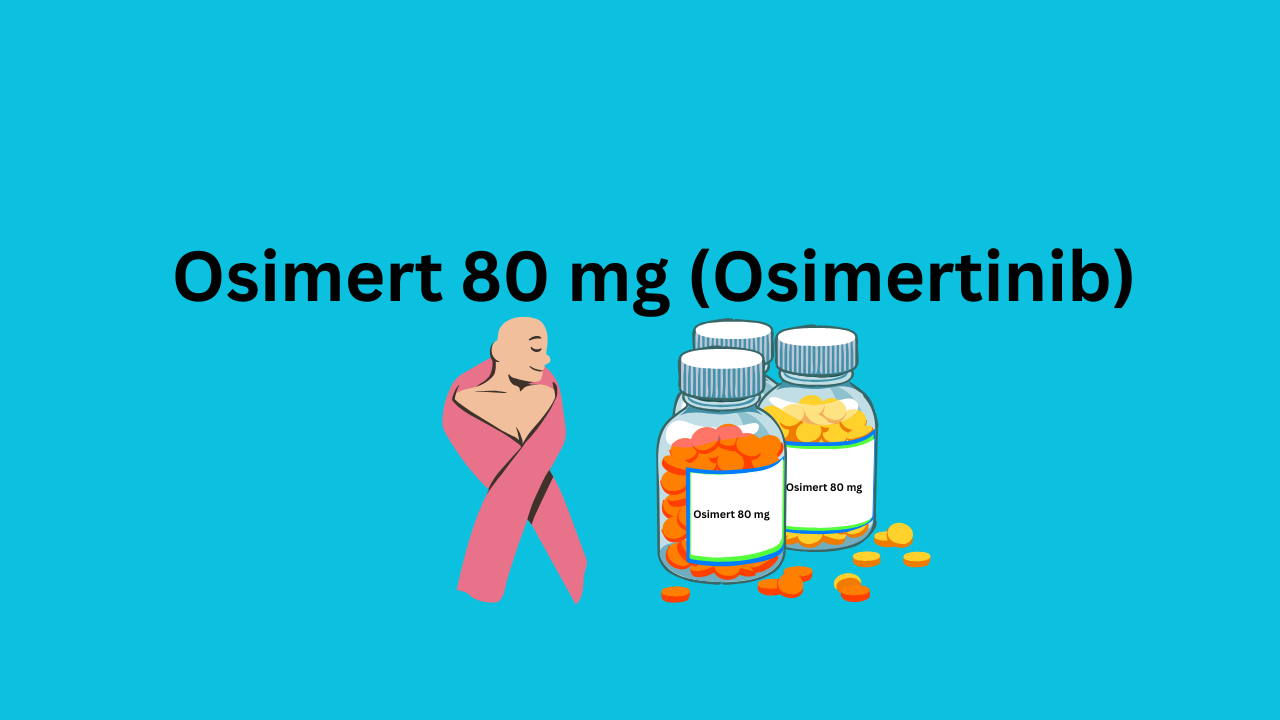
Osimert 80 mg, containing the active ingredient Osimertinib, is a targeted therapy medication used primarily for the treatment of specific types of lung cancer. Manufactured as film-coated tablets, Osimert is designed to address the needs of patients diagnosed with non-small cell lung cancer (NSCLC) that harbors specific genetic mutations in the epidermal growth factor receptor (EGFR). These mutations include EGFR T790M, exon 19 deletions, or exon 21 (L858R) substitution mutations. Approved by regulatory agencies worldwide, including the FDA and EMA, Osimertinib is a third-generation EGFR tyrosine kinase inhibitor (TKI) offering a novel approach to managing advanced lung cancer.
Mechanism of Action
Osimertinib exerts its therapeutic effects by selectively targeting and irreversibly inhibiting mutant EGFR tyrosine kinase activity while sparing wild-type EGFR. The EGFR pathway is known to regulate cellular proliferation, survival, and differentiation. Mutations in EGFR lead to aberrant activation of these pathways, contributing to tumor growth and progression. Osimert 80 mg binds covalently to the cysteine residue in the ATP-binding pocket of EGFR mutants, including the T790M resistance mutation. By effectively blocking downstream signaling pathways, Osimertinib halts tumor cell proliferation and induces apoptosis, demonstrating potent antitumor activity in preclinical and clinical studies.
Indications and Usage
Osimert 80 mg is indicated for the treatment of:
- First-line treatment: Patients with locally advanced or metastatic NSCLC whose tumors harbor EGFR exon 19 deletions or exon 21 (L858R) substitution mutations.
- Second-line treatment: Patients with metastatic EGFR T790M mutation-positive NSCLC who have progressed on or after EGFR TKI therapy, as confirmed by an FDA-approved test.
This precision medicine is particularly beneficial for patients who have developed resistance to earlier-generation EGFR inhibitors, such as erlotinib, gefitinib, or afatinib, due to the T790M mutation.
Dosage and Administration
The recommended dosage of Osimert is one 80 mg tablet taken orally once daily, with or without food. It is crucial to swallow the tablet whole and not crush, chew, or dissolve it. For patients who have difficulty swallowing, the tablet can be dispersed in 50 mL of non-carbonated water, stirred, and consumed immediately.
Treatment with Osimertinib should be continued until disease progression or unacceptable toxicity occurs. Dose adjustments may be necessary based on the severity of adverse reactions or specific patient conditions.
Pharmacokinetics
Osimertinib exhibits favorable pharmacokinetics with rapid absorption, a peak plasma concentration achieved approximately 6 hours after administration, and a half-life of approximately 48 hours. It is metabolized primarily by CYP3A4 and CYP3A5 enzymes in the liver. The drug and its metabolites are eliminated via feces (approximately 68%) and urine (14%). These properties support once-daily dosing.
Safety Profile and Adverse Reactions
While Osimert is well-tolerated by most patients, it is associated with specific side effects, including:
- Common adverse reactions: Diarrhea, rash, dry skin, nail toxicity, and decreased appetite.
- Serious adverse events: Interstitial lung disease (ILD)/pneumonitis, QT interval prolongation, cardiomyopathy, and ocular toxicity.
Patients should be monitored regularly for these adverse effects. For instance, pulmonary symptoms or new-onset dyspnea may warrant discontinuation of therapy due to the risk of ILD.
Contraindications and Precautions
Osimertinib is contraindicated in patients with known hypersensitivity to the drug or its components. Caution is advised for patients with preexisting cardiac conditions, as Osimertinib can prolong the QT interval. Regular ECG monitoring and electrolyte correction are recommended for at-risk individuals.
Pregnant and breastfeeding women should avoid Osimert due to potential harm to the fetus or infant. Effective contraception is advised for women of childbearing potential during treatment and for six weeks following the final dose.
Drug Interactions
Osimertinib interacts with medications that induce or inhibit CYP3A4 enzymes, potentially altering its plasma concentrations. Concurrent use of strong CYP3A4 inducers (e.g., rifampin or phenytoin) should be avoided, as they can decrease Osimertinib’s efficacy. Conversely, caution is required with strong CYP3A4 inhibitors (e.g., ketoconazole or ritonavir) that may increase its toxicity.
Clinical Efficacy
Osimertinib’s efficacy has been demonstrated in pivotal clinical trials, such as the FLAURA and AURA studies. These trials revealed significant improvements in progression-free survival (PFS), overall survival (OS), and objective response rates (ORR) compared to standard EGFR TKIs. For example, in the FLAURA trial, Osimertinib extended median PFS to 18.9 months compared to 10.2 months with comparator TKIs.
Storage and Handling
Store Osimert 80 mg tablets at room temperature (15–30°C) in a dry place, away from direct sunlight and moisture. Keep the medication out of reach of children and pets.
Conclusion
Osimert 80 mg represents a significant advancement in the management of EGFR-mutated NSCLC, offering a tailored approach to address resistance mechanisms and improve patient outcomes. By providing enhanced efficacy and manageable safety, Osimertinib continues to play a pivotal role in precision oncology.